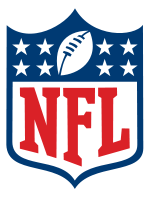 Every product or brand strives to market to a certain kind of consumer who seems most likely–either because of the consumer’s demographic or the product’s unique selling features–to embrace the brand. There are customer relationship management systems available that can sift through thousands of characteristics to paint a portrait of what the ideal customer for the product looks like, demographically speaking. Industries routinely talk about their “sweet spot,” the crosspoint of consumer demographics and product features that make it most likely a given person will buy a product.
Every product or brand strives to market to a certain kind of consumer who seems most likely–either because of the consumer’s demographic or the product’s unique selling features–to embrace the brand. There are customer relationship management systems available that can sift through thousands of characteristics to paint a portrait of what the ideal customer for the product looks like, demographically speaking. Industries routinely talk about their “sweet spot,” the crosspoint of consumer demographics and product features that make it most likely a given person will buy a product.
But what then? After the product is marketed to the most likely customers–the “low hanging fruit”–the product then must be marketed to those outside the sweet spot. They too must be given reasons to buy, and more importantly, objections must be answered.
Therefore, some marketers, flipping over the “low hanging fruit” theory, will ask, “Who’s the person least likely to buy my product and how do I market to them?” There is a kind of perverse logic to this, because if I can convince the person who’s least likely to buy my product, I have what has come to be known as a green field, or blue ocean, in front of me. The marketer must ask inquire of his own product, “Why wouldn’t someone want one of these?”
In politics, this involves going before potentially hostile crowds and winning them over to one’s side with often nothing more than words, but in the commercial world, it may involve inventing a new formulation of the product so that soda pop appeals to overweight people because it has zero calories. There once was a time when only men watched the NFL, but the league figured out how to market the sport to women through advertising, special lines of clothing, female sideline reporters, and other promotional aspects so that today most women are football fans, however casual.
It’s almost as if one could draw a diagram, with the person most likely to buy as the bullseye and concentric rings around the bullseye, describing the next ring of consumers likely to buy and so on, till the last ring were consumers least likely to buy. The marketer would then know what each of these groups looks like, and the factors of each that would cause them not to buy. Then, the marketer has a handy list of objections to be overcome.
In some cases, removing the objections demands a reconfiguration of the product. If vegetarians refuse to eat meat hot dogs, the hot dog manufacturer is going to have to come up with a credible, meatless substitute.
In some cases, however, the objection may be more about how the product is marketed. Women may or may not be put off by the amount of violence in the NFL, but if the disagreeable part is balanced by features they do like–having a common cause with guys and the home team–they’ll be more likely to buy other products that bear an NFL logo.
The more the marketing department knows about its consumer mix, the better it will be able to broaden its appeal and increase sales.






